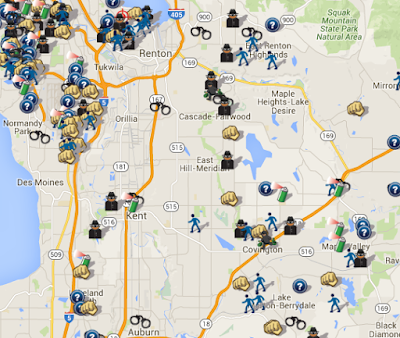No.
So, why do we happily wait a year for access and the ability to analyze crime rates with UCR (Unifrom Crime Reporting) and NIBRS (National Incident Based Reporting System) reporting?
Although well intentioned, it is our belief that UCR and NIBRS should not be data communities ask for and utilize when trying to figure how to assess crime in their neighborhood.
*Please note we are not arguing for cessation of UCR and NIBRS. If these reports have been around for so long, then they must be useful. Right?
UCR and NIBRS Fall Short
Timeliness: One of the problems with UCR and NIBRS reporting from the community perspective is timeliness. The reports are only compiled quarterly by police agencies who then report them on to the FBI. Then, the FBI releases ‘official’ nationwide statistics about every 6 months, give or take a few months. Only preliminary data for January-June of 2015 has been released as of today (March 2016).
Non-inclusive: Another problem with UCR and NIBRS is it’s not inclusive. The only agencies obligated to even submit UCR or NIBRS are the ones who want to receive federal funding. This leaves the potential for no public access to any crime statistics in some cities. Also, atypical police agencies like college campuses, military bases, or private security do not to submit UCR and NIBRS reports. Colleges and universities do have to submit Clery Reports which utilize UCR reporting definitions, however, those reports are not required to be submitted to the FBI.
Limited Use: The FBI does not condone the use of the data in city to city comparisons or any sort of crime ranking mainly because of the variability in reporting.
Low Hanging Fruit is Key
Data that should be utilized and demanded by communities is ‘low hanging fruit’ data. ‘Low hanging’ meaning CAD and RMS data - the data right in front of us and readily available.
Slate’s Jeff Asher writes ‘CFS is massively underused...When it comes to police data, that means saying UCR is just not good enough.’ We agree.
CAD (Computer Aided Dispatch)/CFS (Calls For Service) and RMS (Records Management System) data is available in every city in the US. Agencies are most likely already using these data feeds internally and majority of the time those same reports are easily turned into publicly accessible information to share openly with communities.
Crime Data Standards
Low hanging fruit like CAD and RMS data is the basis behind the SpotCrime Open Crime Standard (SOCS).
SOCS encourages any agency to release a simplified, up-to-date log of crime incident data.
A open crime standard will help:
- Increase dissemination of information
- Increase agency to agency communication
- Increase resident to agency communication
- Create uniformity between local jurisdictions
- Allow for comparative analysis between jurisdictions
- Create an all-inclusive look at crimes happening
If your police agency is looking for a quick and easy way to publish crime data to the public, please share SOCS with them. Ask them to release relevant, timely crime data in an open and unrestricted format.


Add a comment